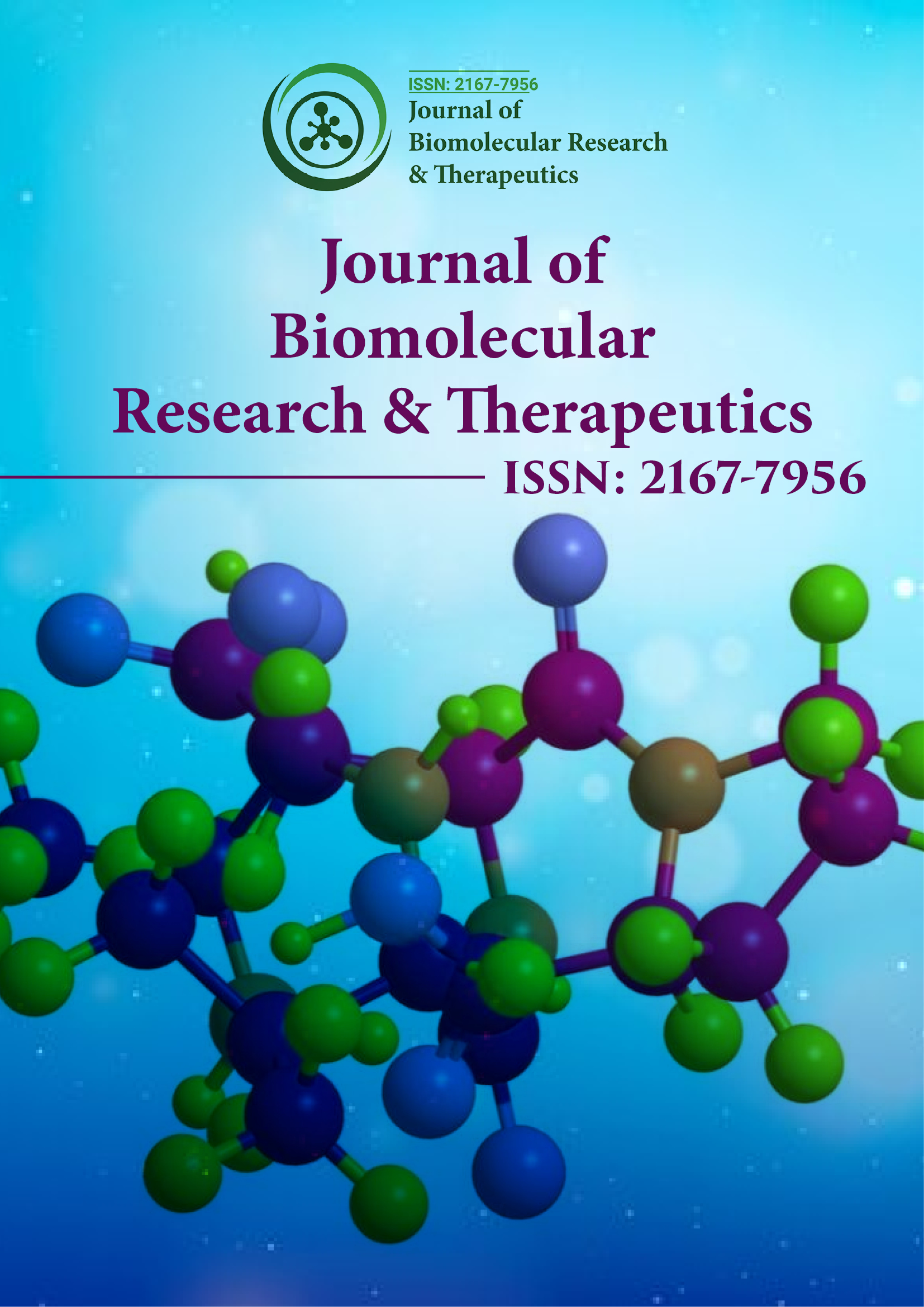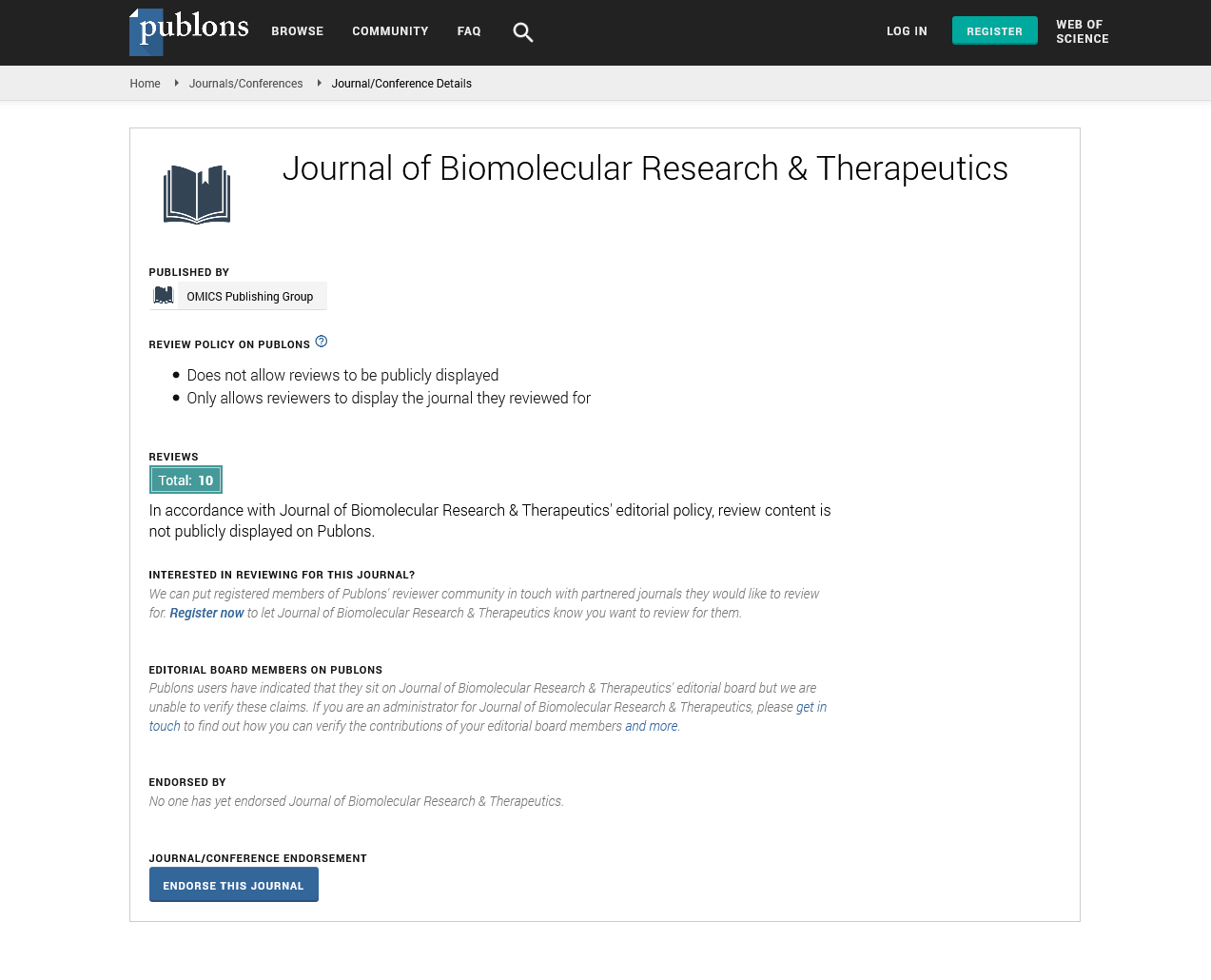Indexed In
- Open J Gate
- Genamics JournalSeek
- ResearchBible
- Electronic Journals Library
- RefSeek
- Hamdard University
- EBSCO A-Z
- OCLC- WorldCat
- SWB online catalog
- Virtual Library of Biology (vifabio)
- Publons
- Euro Pub
- Google Scholar
Useful Links
Share This Page
Journal Flyer

Open Access Journals
- Agri and Aquaculture
- Biochemistry
- Bioinformatics & Systems Biology
- Business & Management
- Chemistry
- Clinical Sciences
- Engineering
- Food & Nutrition
- General Science
- Genetics & Molecular Biology
- Immunology & Microbiology
- Medical Sciences
- Neuroscience & Psychology
- Nursing & Health Care
- Pharmaceutical Sciences
David J Weber

David J Weber
Professor, Biochemistry & Molecular Biology
University of Maryland, USA
Biography
Professor David J. Weber has received his PhD in Chemistry from the University of North Carolina – Chapel Hill (1984-1988). He also completed a Post Doctoral Fellowship at Johns Hopkins University School of Medicine from the Department of Biological Chemistry (1988-1992). Since 1992, Dr. Weber has been at the University of Maryland School of Medicine where he was promoted through the academic ranks to full Professor of Biochemistry & Molecular Biology. He is also a Professor of Medicine, the Director of the Center for Biomolecular Therapeutics (CBT) and the Associate Director of the Institute of Biotechnology and Bioscience Research (IBBR). He is serving as an editorial member of more than 10 journals, and has authored more than 150 research articles & book chapters involving basic science and biomedical therapeutics advances.
Research Interest
Several projects in the Weber laboratory involveexamining the structure and function of S100 proteins, including S100B, a growth factor in the brain and skin. S100B is a dimeric Ca2+-binding protein that is overproduced during gliosis in patients with Alzheimer disease, Down syndrome, and Aids related dementia. In addition, S100B and/or other members of the S100 protein family are elevated in cancers including tumors involving skin, lung, bladder, kidney, cervix, breast, head and neck, larynx, lymph, and mouth to name a few. In addition to being biomarkers, overproduction of S100 proteins is now recognized as a problem that contributes to the up-regulation of cell growth in these diseases. Presumably, the function of S100B is related to its ability to bind a variety of target proteins in a Ca2+-dependent manner. One such target is the tumor suppressor protein, p53. For this protein, the Weber lab and their collaborators have shown that up-regulation of S100B abrogates p53 transcription activation and apoptosis functions in cancer. Therefore, theinitial focuswas to determine, at atomic resolution, the mechanism by which S100B affects p53 transcription activation and promotes uncontrolled cell growth. In this regard, the three-dimensional structures of apo-S100B, S100B-Ca2+, and the S100B-Ca2+-p53 peptide complexes were determined using NMR spectroscopy, which clearly illustrated why the S100B-p53 protein-protein interaction was calcium-dependent. Such structural studies werealso imperative for the efficient design of biochemistry and the molecular biology experiments that have led to an understanding of how S100B inhibits p53 function. Knowledge about the structure and function of S100B isalso being used to discover/design molecules that inhibit the S100B-p53 complex and restore p53 tumor suppression function in cancers with elevated S100B levels and wild-type p53, such as malignant melanoma. Several such inhibitors have been discovered, designed, and characterized, and one has advanced to a human phase 2 clinical trial done by our collaborator, Dr. Ed Sausville (http://clinicaltrials.gov/ct/show/NCT00729807), and several patents for inhibiting S100 proteins as a means to treat cancer are being processed and/or were issued. As the Director of the Center of Biomolecular Therapeutics (CBT), the Director of the Program of Molecular & Structural Biology, and the Co-director of the Greenebaum Cancer Center Structural Biology Shared Service, our lab also works with PI\\\\\\\\\\\\\\\'s throughout the University System of Maryland (USM) and the Greenebaum Cancer Center on numerous structural and drug design projects, as part of our service activities and via collaborative efforts. Such efforts involve state-of-the-art scientific discipline-based programs necessary for the discovery and regulation of disease targets including, but not limited to, genomics/bioinformatics, target identification & validation, assay development & high-throughput screening, protein production & characterization, structural biology, computer-aided drug design, medicinal chemistry, and in vivo testing & biology.

